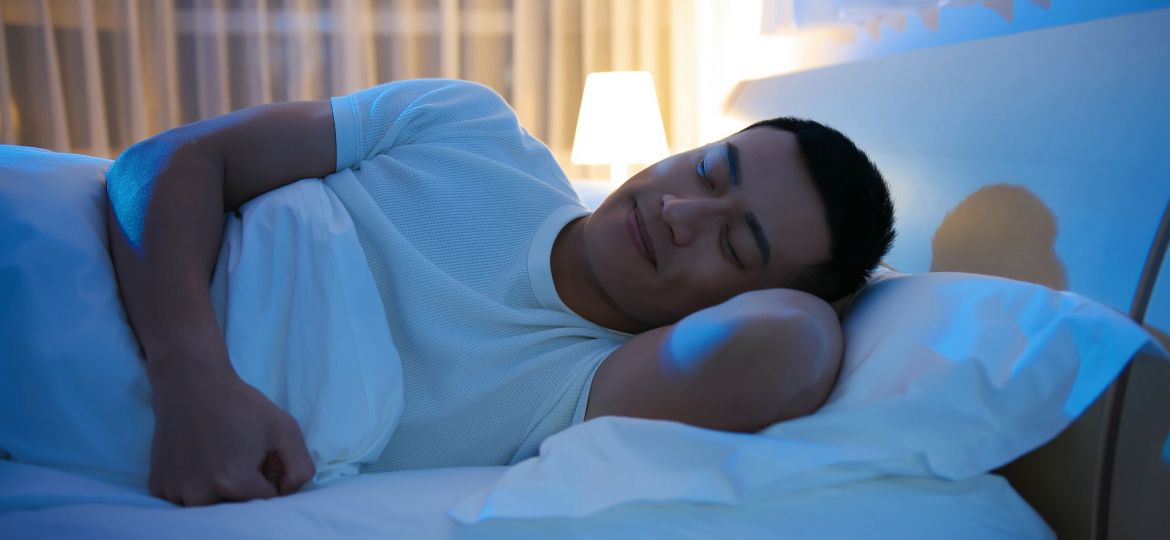
Continuous positive airway pressure (CPAP) therapy is a widely used treatment for sleep apnoea and other respiratory disorders. A CPAP machine delivers a steady stream of pressurised air through a mask, preventing airway obstruction and ensuring uninterrupted breathing during sleep. With different machine types, mask options, and adjustable settings, CPAP therapy is tailored to individual needs for maximum comfort and effectiveness. Proper setup, consistent use, and regular maintenance are essential for successful therapy. This blog provides detailed information on CPAP machines, including selection, usage, cleaning, benefits, and alternatives.
What is a CPAP machine?
A CPAP machine is a medical device designed to treat sleep apnoea and other respiratory disorders by maintaining continuous airflow through a mask. It prevents airway obstruction during sleep, ensuring normal breathing patterns. CPAP machine consists of a motorised unit, tubing, and a mask that covers the nose, mouth, or both. Many modern CPAP devices also include features such as humidifiers and automatic pressure adjustments to enhance user comfort.
Beyond sleep apnoea, CPAP therapy is used to manage conditions like chronic obstructive pulmonary disease (COPD), congestive heart failure (CHF), and neuromuscular disorders. By maintaining consistent airway pressure, CPAP machines improve oxygenation, reduce respiratory distress, and support lung function in patients with breathing difficulties.
Types of CPAP machines
Different CPAP machines are designed to cater to varying needs. The main types include:
Fixed-pressure CPAP machine: This machine delivers a continuous, preset level of air pressure throughout the night. It is effective for individuals with stable apnoea.
- Auto-adjusting CPAP (APAP) machine: An APAP machine adjusts air pressure levels automatically based on real-time breathing patterns. It provides customised therapy, improving comfort and compliance.
- Bi-level positive airway pressure (BiPAP) machine: BiPAP machines offer two pressure settings, a higher pressure during inhalation and a lower pressure during exhalation. They are typically recommended for individuals who struggle with standard CPAP therapy.
CPAP machine setup
CPAP machine setup involves selecting the right equipment and configuring it for optimal comfort and effectiveness.
Choosing the right CPAP machine: CPAP machines come in different models, including fixed-pressure, auto-adjusting (APAP), and BiPAP machines. A sleep specialist prescribes the appropriate type based on the severity of sleep apnoea.
Selecting the correct mask: CPAP masks vary by breathing style and comfort needs. Nasal masks suit nose breathers, nasal pillow masks minimise contact for claustrophobic users, and full-face masks are best for mouth breathers. A proper fit prevents leaks and ensures comfort.
Placing the machine properly: Position the CPAP machine on a stable, flat surface close to the bed. Ensure the air intake is unobstructed to maintain optimal airflow. Keep the machine at or slightly below head level to minimise condensation in the hose.
Connecting the tubing: Securely attach the tubing to both the CPAP machine and the mask. Avoid excessive bending or twisting of the hose to ensure an unobstructed flow of air.
Adjusting humidification: Many CPAP machines include built-in humidifiers to prevent dryness and irritation. Adjust the humidity level according to personal comfort and environmental conditions.
Usage and cleaning of CPAP machine
To use a CPAP machine effectively, start by wearing the mask correctly. Position the mask over the nose, mouth, or both, depending on the type. Secure the straps firmly but not too tightly to prevent discomfort. Adjust the mask as needed to ensure there are no air leaks. Once the mask is in place, turn on the CPAP machine, which will deliver pressurised air according to the prescribed settings. If using an APAP machine, it will automatically adjust the pressure based on breathing patterns.
After starting the machine, breathe naturally through the mask. It may take time to adjust, but consistent use will improve comfort and compliance. If necessary, use the ramp feature to start with a lower pressure that gradually increases to the prescribed level. Adjust humidity settings to prevent nasal dryness or congestion, ensuring a more comfortable experience with the therapy.
Clean the CPAP machine by disassembling the mask and washing it daily with mild soap and warm water. Rinse thoroughly and dry completely before reassembling. Wipe the exterior of the machine with a dry cloth. Clean the tubing, humidifier chamber, and mask straps weekly using soapy water. Rinse them well and allow them to air dry. Check the filters regularly and replace them if needed. Inspect the hose for any damage, ensure the mask seals properly, and verify that the power supply and settings are correct for optimal performance.
Benefits of CPAP therapy
CPAP therapy offers several health benefits by preventing airway obstruction during sleep. One key advantage is improved sleep quality. By maintaining an open airway, CPAP therapy reduces sleep disruptions, allowing for deeper and more restorative sleep. This improvement in sleep can also reduce the risk of cardiovascular diseases. Untreated sleep apnoea is linked to an increased risk of hypertension, heart disease, and stroke, but CPAP therapy helps to mitigate these risks.
Additionally, better sleep quality enhances cognitive function and improves memory, concentration, and overall mental performance while reducing daytime fatigue and boosting productivity. Furthermore, the restorative sleep provided by CPAP therapy helps to improve daytime sleepiness, leading to increased energy levels and overall well-being.
Alternatives to CPAP machines
While CPAP therapy is the most effective treatment for sleep apnoea, there are alternative options for individuals who have difficulty adhering to it. One such option is using oral appliances, specifically mandibular advancement devices (MADs), which reposition the lower jaw to prevent airway obstruction. These devices are typically suited for mild to moderate obstructive sleep apnoea (OSA) cases. Another alternative is positional therapy, which involves sleeping on the side rather than on the back to reduce airway collapse in some individuals.
Lifestyle modifications, such as weight loss, regular exercise, and avoiding alcohol or sedatives before bedtime, can also improve sleep apnoea symptoms. In more severe cases, where CPAP therapy is ineffective, surgical options like uvulopalatopharyngoplasty (UPPP) or hypoglossal nerve stimulation may be considered.
Consistent use of CPAP therapy is vital for effective treatment. Compliance reduces apnoea episodes, improves sleep quality, and enhances overall health. Non-adherence may lead to persistent fatigue, cardiovascular complications, and decreased cognitive function. Using a CPAP machine correctly involves proper setup, consistent usage, and regular maintenance. Overcoming initial discomfort and troubleshooting common issues ensures long-term success in managing sleep apnoea. Consultation with healthcare providers helps to optimise therapy effectiveness, leading to improved sleep and overall well-being.
If you’re experiencing sleep problems, it’s important to seek professional advice. As a sleep and respiratory health specialist, I offer consultations to evaluate and address sleep-related issues. Contact us for expert guidance and support in managing your sleep concerns.
